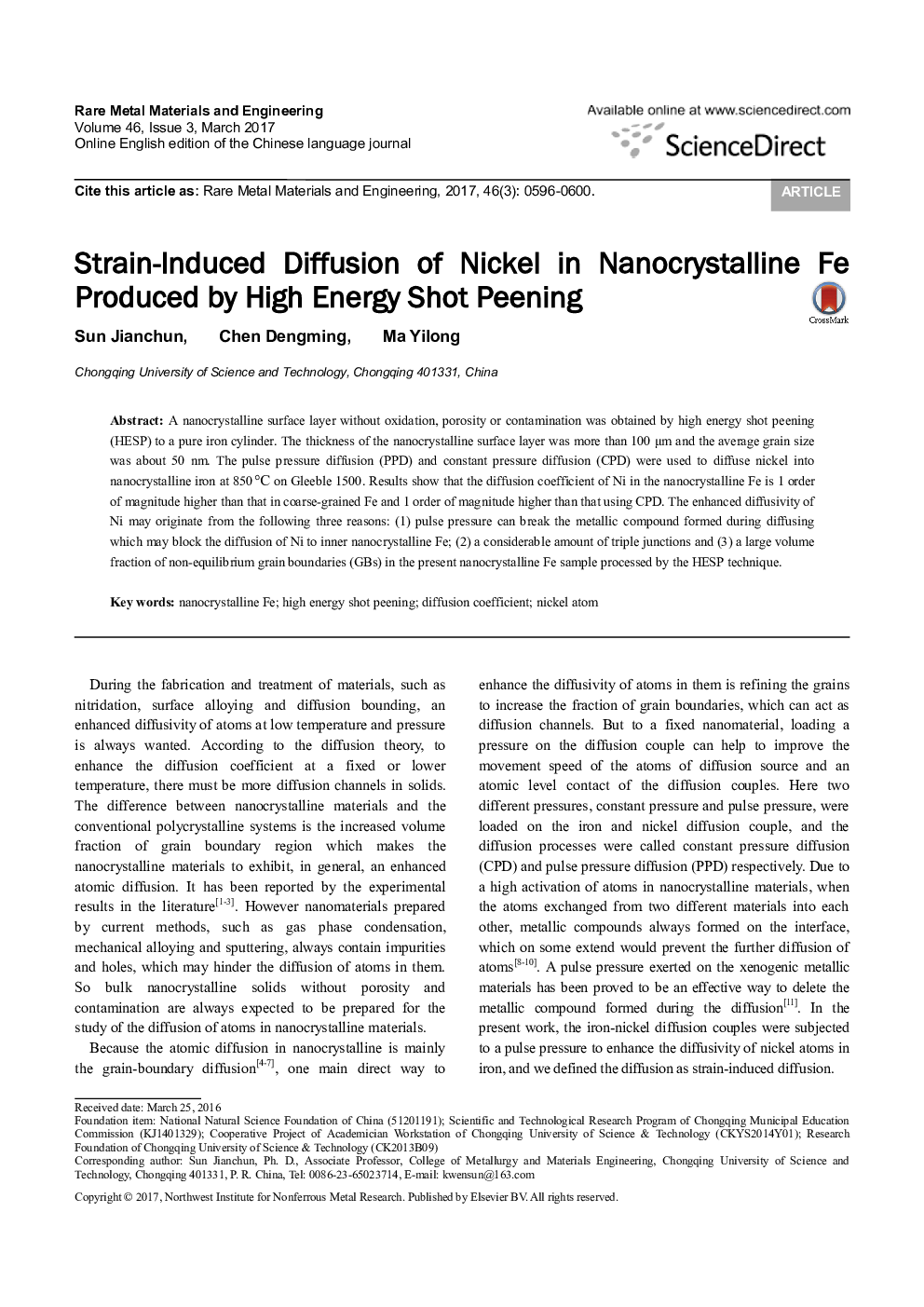| Article ID | Journal | Published Year | Pages | File Type |
|---|---|---|---|---|
| 7210441 | Rare Metal Materials and Engineering | 2017 | 5 Pages |
Abstract
A nanocrystalline surface layer without oxidation, porosity or contamination was obtained by high energy shot peening (HESP) to a pure iron cylinder. The thickness of the nanocrystalline surface layer was more than 100 μm and the average grain size was about 50 nm. The pulse pressure diffusion (PPD) and constant pressure diffusion (CPD) were used to diffuse nickel into nanocrystalline iron at 850 °C on Gleeble 1500. Results show that the diffusion coefficient of Ni in the nanocrystalline Fe is 1 order of magnitude higher than that in coarse-grained Fe and 1 order of magnitude higher than that using CPD. The enhanced diffusivity of Ni may originate from the following three reasons: (1) pulse pressure can break the metallic compound formed during diffusing which may block the diffusion of Ni to inner nanocrystalline Fe; (2) a considerable amount of triple junctions and (3) a large volume fraction of non-equilibrium grain boundaries (GBs) in the present nanocrystalline Fe sample processed by the HESP technique.
Related Topics
Physical Sciences and Engineering
Engineering
Mechanics of Materials
Authors
Sun Jianchun, Chen Dengming, Ma Yilong,
